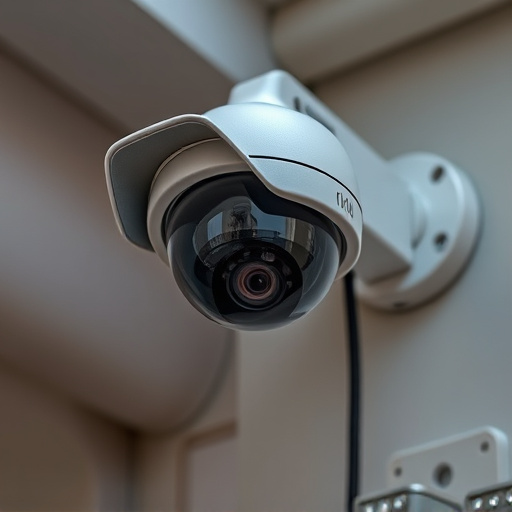Strategic placement of realistic fake CCTV cameras acts as an effective deterrent for potential criminals, leveraging human psychology and environmental design principles. By mimicking authentic systems without causing alarm, these decoy cameras communicate constant surveillance, discouraging suspicious behavior in high-risk areas. However, ethical considerations regarding privacy and civil liberties require transparency, consent where possible, responsible placement, and secure data storage to balance security enhancement with individual rights. Fake CCTV placement remains a cost-effective game changer for fostering secure environments while navigating legal and ethical boundaries surrounding surveillance.
- Understanding the Psychology Behind Fake Surveillance Equipment
- Types and Placement Strategies for Realistic Fake CCTV
- Legal Considerations and Ethical Implications of Using Fake Surveillance
- Case Studies: Effective Use of Fake CCTV for Deterrence
Understanding the Psychology Behind Fake Surveillance Equipment
The placement and visual presence of surveillance equipment play a significant role in deterring potential criminals, as humans are inherently influenced by their perceptions of security. Fake CCTV cameras, strategically positioned, can create an illusion of heightened surveillance, instilling a sense of fear and caution among would-be offenders. This psychological effect is a powerful tool in crime prevention, as research suggests that the simple sight of surveillance technology can deter individuals from engaging in criminal activities.
Understanding human behavior and the principles of environmental psychology is key to leveraging fake surveillance equipment effectively. By imitating the look and feel of genuine CCTV cameras with high-quality replicas, business owners and property managers can send a powerful message without raising unnecessary alarms or concerns among patrons, employees, or residents. This subtle yet effective approach ensures that individuals are aware they’re being watched, potentially deterring them from engaging in suspicious behavior or committing crimes.
Types and Placement Strategies for Realistic Fake CCTV
Realistic fake surveillance equipment, often referred to as decoy or dummy CCTV cameras, come in various types designed to mimic authentic security systems. These range from visually identical replicas of real cameras to more sophisticated models that can simulate movement and even change colors to match environmental lighting. Their strategic placement is crucial for effective deterrence, making potential criminals think they’re under constant watch.
For optimal Fake CCTV Placement for Deterrence, consider high-risk areas like entry points, parking lots, and public gathering spaces. Mounting them at eye level or slightly elevated angles, where visible but not obtrusive, can maximize their psychological impact. Discreet placement, such as behind signs or under overhangs, adds realism without drawing undue attention. Regular maintenance and periodic repositioning also contribute to their effectiveness by keeping potential perpetrators guessing about the true extent of surveillance.
Legal Considerations and Ethical Implications of Using Fake Surveillance
The use of realistic fake surveillance equipment, such as fake CCTV cameras, raises a series of legal and ethical considerations. While strategically placed fake CCTV can serve as an effective deterrent for criminal activity by simulating actual surveillance, it also poses potential risks to privacy and civil liberties. The primary concern revolves around the interpretation of laws pertaining to surveillance, consent, and data protection, especially when fake cameras are used in public spaces or residential areas.
Ethically, the deployment of fake surveillance equipment should balance the benefits of enhancing security with the right to privacy. It’s crucial for law enforcement and private property owners to be transparent about the presence of these devices and ensure their use aligns with established ethical guidelines. This includes obtaining consent when feasible, avoiding excessive or indiscriminate placement, and guaranteeing that any recorded data is securely stored and accessed only by authorized personnel.
Case Studies: Effective Use of Fake CCTV for Deterrence
Realistic fake surveillance equipment, or fake CCTV, has emerged as a powerful tool for enhancing security and deterring potential criminals. By understanding the psychological impact and employing strategic placement techniques, organizations can effectively leverage this technology to create a sense of heightened awareness. As demonstrated in various case studies, fake CCTV placement for deterrence can significantly reduce real crime rates while navigating legal and ethical considerations. Balancing these factors ensures that the use of fake surveillance equipment remains a valuable asset in modern security strategies.
